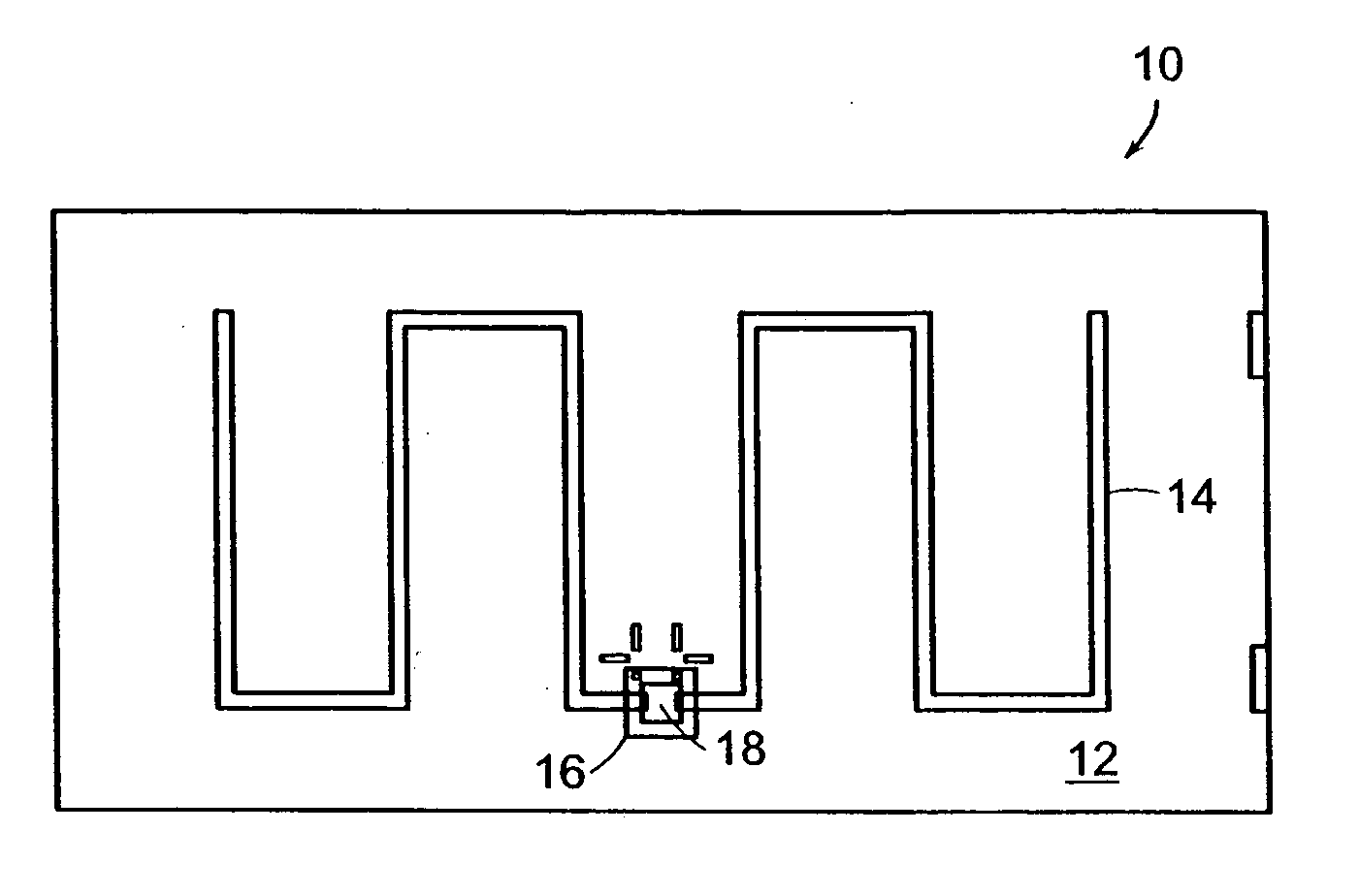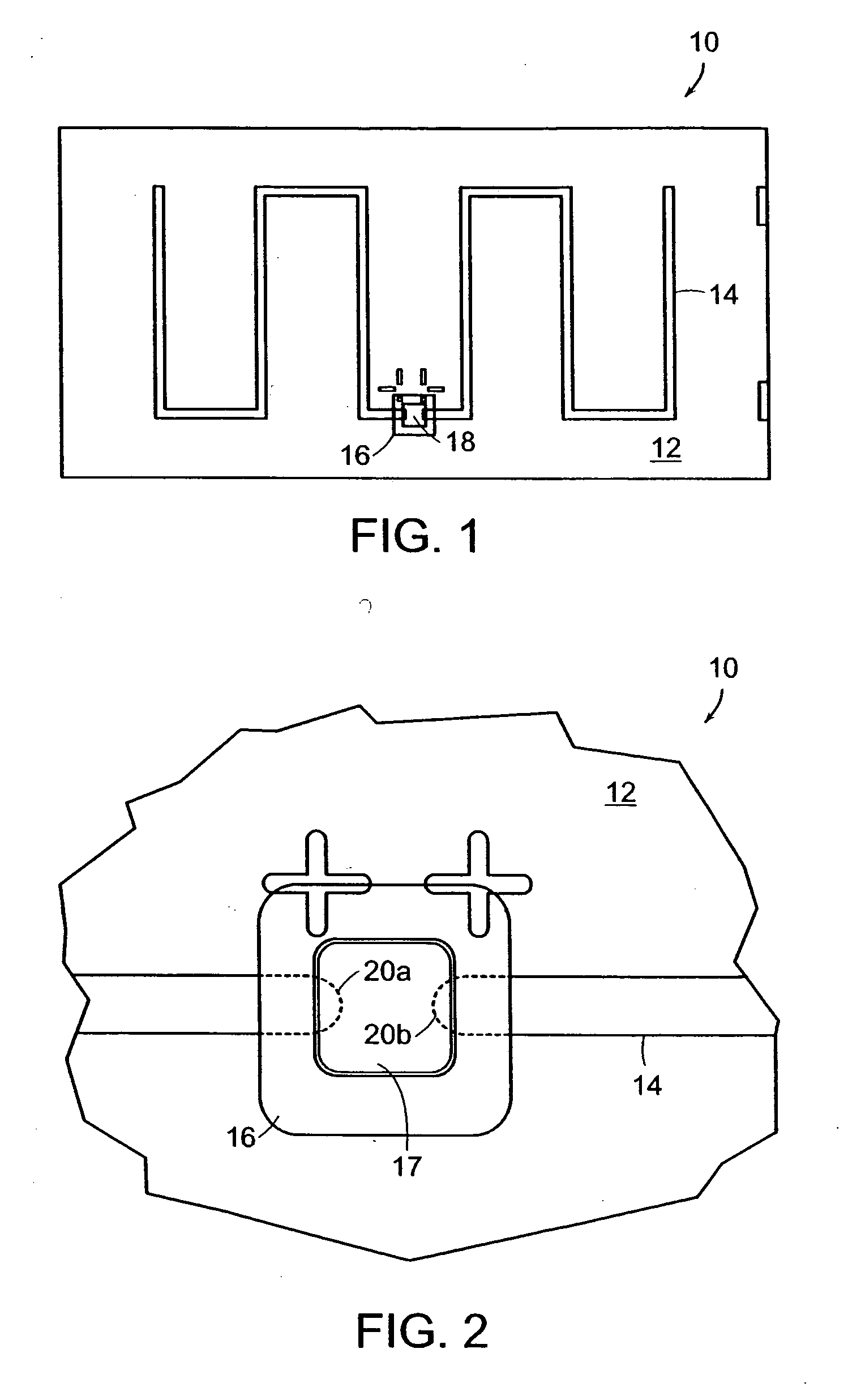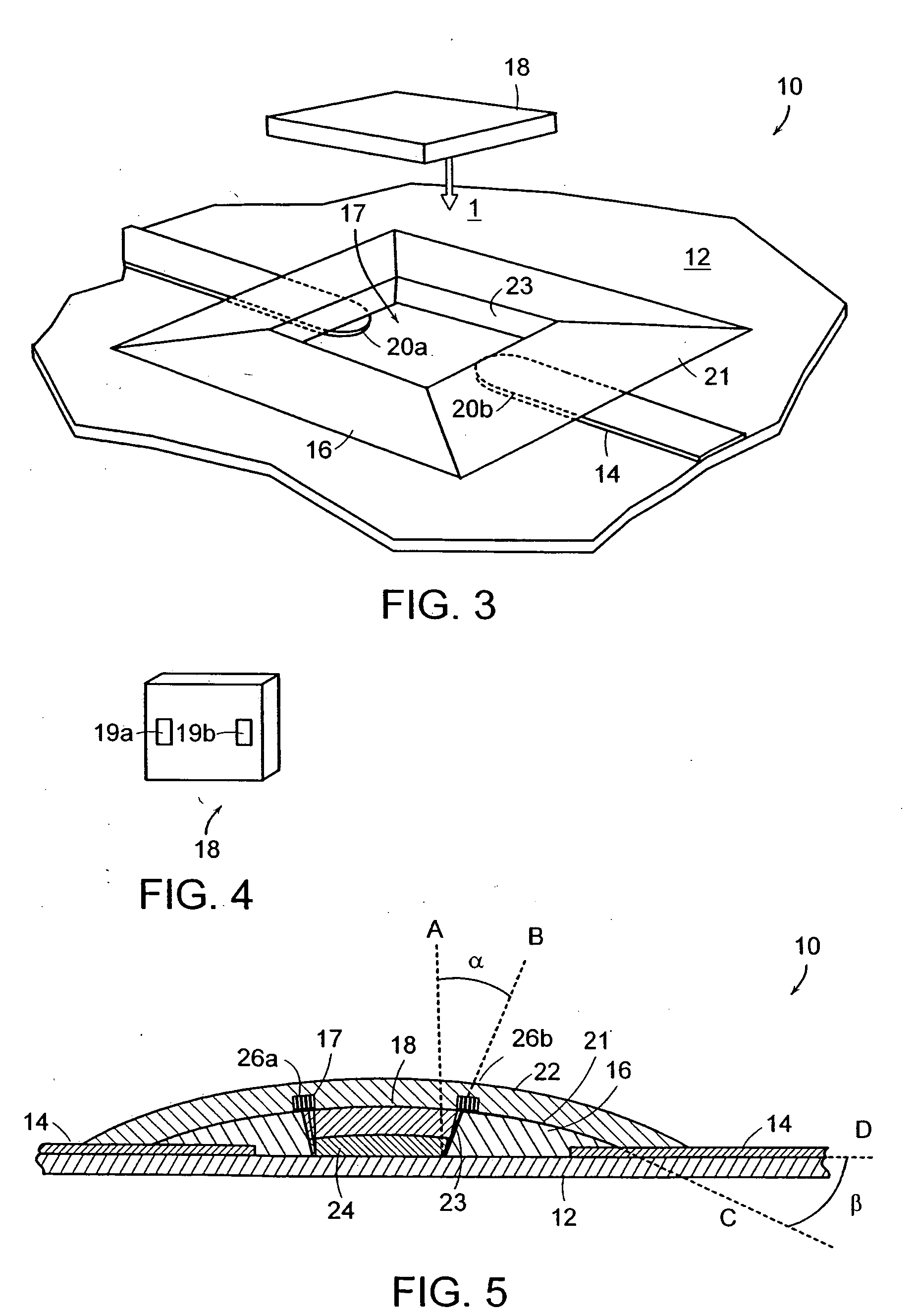Radio frequency identification tag and method of making the same
- Summary
- Abstract
- Description
- Claims
- Application Information
AI Technical Summary
Benefits of technology
Problems solved by technology
Method used
Image
Examples
Embodiment Construction
[0026] Two embodiments of the invention to accommodate the silicon die in a normal (bond pads up) and flip chip (bond pads down) orientation are presented here. In accordance with a preferred embodiment of the present invention, FIG. 1 illustrates a plan view of an RFID tag 10. The RFID tag 10 includes a substrate 12 and an antenna 14 that is located upon the substrate 12. The RFID tag 10 further includes a die positioning structure 16 in which a silicon die 18 is disposed.
[0027] The details of the RFID tag 10 are shown in FIG. 2, which is a detailed plan view of the present invention. As shown in FIG. 2, the die positioning structure 16 is disposed on the substrate 12 such that it overlaps the antenna 14. The die positioning structure 16 is disposed such that it substantially overlaps antenna leads 20a, 20b. The die positioning structure 16 defines in part a die positioning cavity 17, which is also located such that it substantially overlaps the antenna leads 20a, 20b in such a ma...
PUM
 Login to View More
Login to View More Abstract
Description
Claims
Application Information
 Login to View More
Login to View More - R&D
- Intellectual Property
- Life Sciences
- Materials
- Tech Scout
- Unparalleled Data Quality
- Higher Quality Content
- 60% Fewer Hallucinations
Browse by: Latest US Patents, China's latest patents, Technical Efficacy Thesaurus, Application Domain, Technology Topic, Popular Technical Reports.
© 2025 PatSnap. All rights reserved.Legal|Privacy policy|Modern Slavery Act Transparency Statement|Sitemap|About US| Contact US: help@patsnap.com



